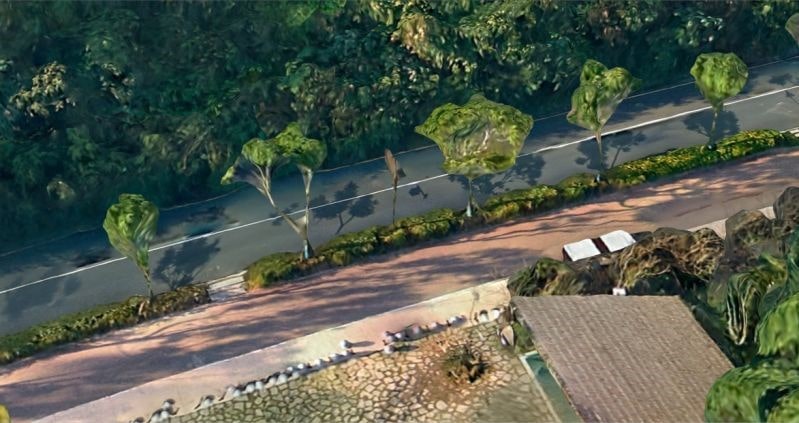3D modeling is predominantly achieved through oblique photography techniques. In order to achieve a true representation of the real world, it is important that the resulting model reflects reality as accurately as possible. However, 3D models generated from existing modeling software often contain flaws that due to two types of factors: Principle-based factors and Subjective factors.
As such, it is imperative to consider these factors when creating 3D models for real-time applications. By doing so, we can ensure that the resulting models are both accurate and reliable, leading to better outcomes in a variety of industries and applications.
Factor 1: Principle-based Factors
Principle-based factors refer to limitations in the current mainstream oblique photography 3D modeling software, which relies on the extraction and matching of image feature points to establish models. The following four scenes can lead to problems for this process:
1) Reflective surfaces that cannot reflect the true texture of objects, such as water surfaces, glass, and large single-textured building surfaces.

2) Slow-moving objects, like cars at crossroad, can cause matching errors.

3) Vegetation that sways in the wind and other complex scenes, such as trees and shrubs, are difficult to match feature points and may have large errors.

4) Complex and hollow buildings, including fences, base stations, iron towers, and high-voltage lines, pose challenges to establishing models due to their intricate shapes and details.

Such limitations are observed in scenes 1 and 2, where no matter how much the quality of the original data is improved, the modeling effect remains subpar. In these scenes, increasing the model's resolution may even worsen the modeling effect. Although increasing the model resolution can improve the modeling effect in scenes 3 and 4 to some extent, there is still a high risk of holes and distortions. Moreover, this approach can be highly inefficient.
The modeling flaws in all four scenes can be attributed to principle-based problems in oblique photography. These problems are inherent and unavoidable at the current stage of technology.
Factor 2: Subjective Factors
The second category of flaws in 3D modeling arises from the influence of subjective factors, which include the setting of flight operation parameters, flight lighting conditions, data acquisition equipment, and modeling software. These factors can give rise to a range of issues, such as overlapping models, overall distortion, melting, serious shadow and light mottling, building dislocation, deformation, and adhesion.


Of course, these problems can also be solved through post-software patching. However, customers who have been involved in related work should be aware that the manpower and time costs of large-scale model modification work are very high.

Before: Original Modeling

After: Refined modeling
As a manufacturer of oblique photography cameras, Rainpoo Technology has deeply considered these two types of flaws from the perspective of equipment development: How to design an oblique photography camera to improve modeling efficiency without increasing overlap or the number of aerial photographs.

As someone who works in the mapping and camera field, I found your blog to be an incredibly valuable resource. I appreciate the depth and clarity of your technical blog.
The articles are informative and well-written, and the blog’s design makes it easy to navigate and find the information I need.